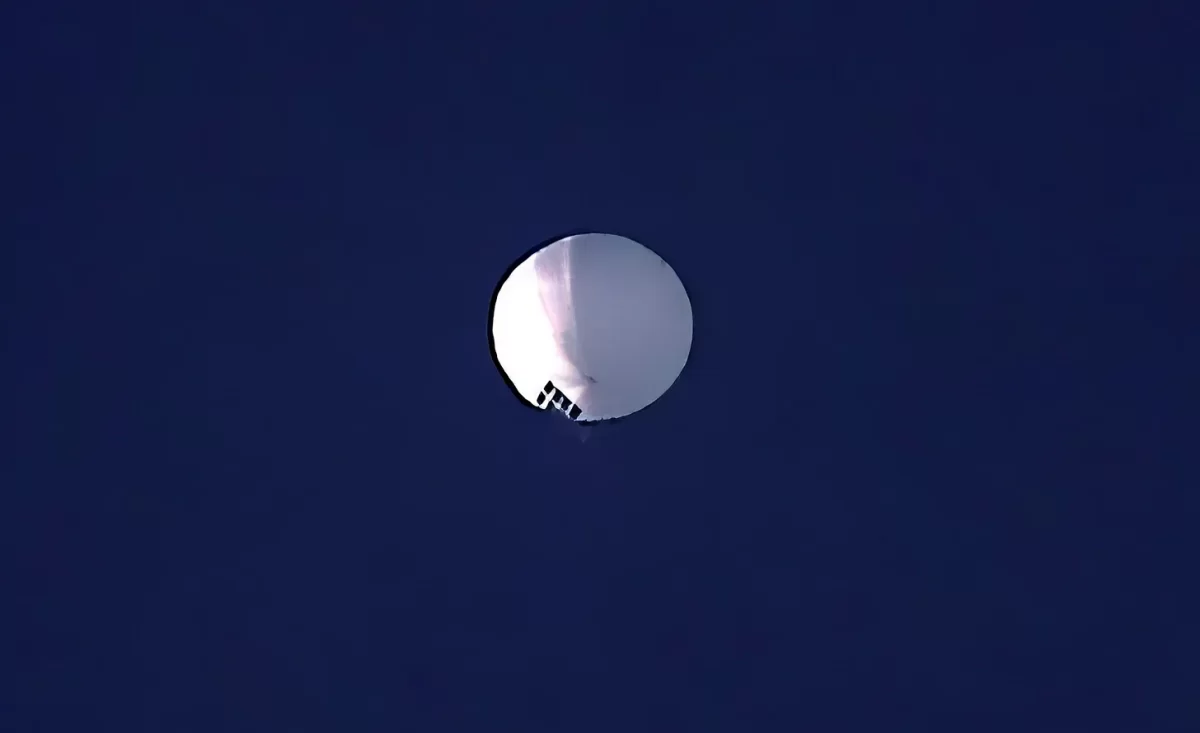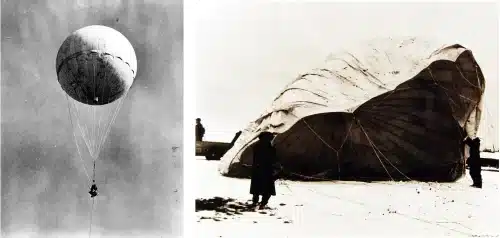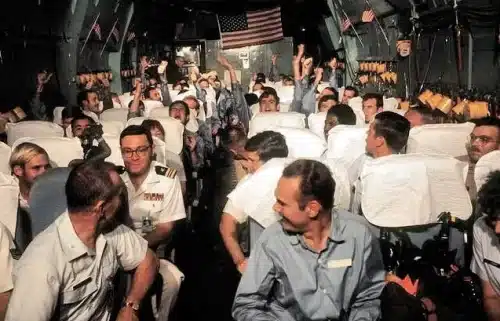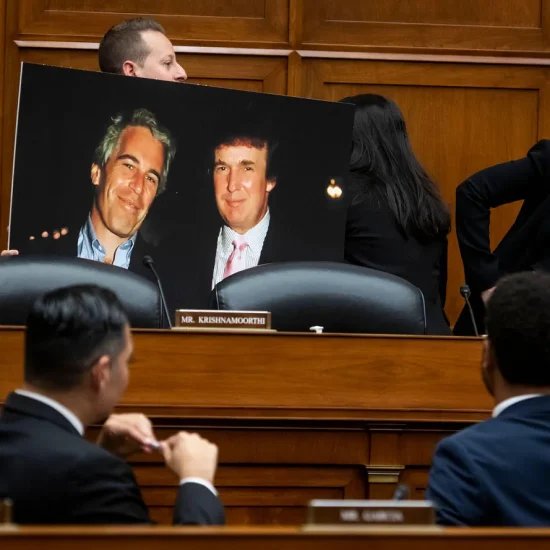
A balloon floating over the U.S. last week quickly brought a lot of hot air to cable news airwaves, social media, and political debates. As the balloon, believed to be a spy craft from China, sojourned across the nation, some politicians enlisted it to score points against domestic foes. Many of the responses — other than funny Facebook memes and late night TV jokes — demonstrated a poisonous spirit that too often dominates our culture.
Some Republican members of Congress criticized President Joe Biden for not immediately shooting it down. The U.S. military eventually destroyed the balloon on Saturday (Feb. 4) once it was over the Atlantic Ocean where the falling debris wouldn’t harm anyone below. But that didn’t deflate the partisanship.
House Republicans are considering passing a resolution criticizing Biden, and there will likely be congressional hearings into the incident and perhaps more as reports emerge of other spy balloons over the U.S. during both the Trump and Biden administrations. It might soon be the most-talked-about balloon since the Hindenburg (oh, the humanity).

A high-altitude Chinese balloon floats over Billings, Montana, on Feb. 1, 2023. (Larry Mayer/Billings Gazette via AP)
Before the balloon popped, some politicians offered particularly unhelpful responses as they grabbed their guns to go hunting. But with the balloon floating up in the air about 60,000 feet away, the only things these armed politicians could hurt would be innocent bystanders or public perceptions of their intelligence (though in some cases there was nothing left to damage).
Sen. J. D. Vance of Ohio posted a pic of himself holding a gun and looking up at the sky, though say an elegy for this “hillbilly” and his suede shoes because the balloon never even traveled over him. Former Secretary of State (and soon-to-be former presidential candidate) Mike Pompeo posted an image of himself as if he could blast it down while going skeet shooting. Rep. Paul Gosar of Arizona tweeted a photo of himself aiming a handgun at a target straight in front of him even though the balloon was up in the sky — which might explain why the Jan. 6, 2021, insurrection failed since he was one of the key congressional brains behind it. Rep. Marjorie Taylor Greene (R-QAnon) went a bit further and posted a video of her and her gun in a helicopter patrolling the skies, though for some reason she didn’t use a Jewish space laser.
The list of GOP politicians posing with their gun porn includes many more examples. But despite their bravado, they all failed to actually kill the balloon. They claimed to have the solution, which was literally not actually a solution. In a time when the U.S. needs leadership, too many politicians just want to cosplay on social media.
It’s a far cry from the witness of a minister who experienced tragedy after a balloon floated across the Pacific to the U.S. during World War II. Perhaps in that historical true-life tale of a balloon invasion, we can spy problems with the responses we’ve seen in recent days to the most-watched balloon outside the Thanksgiving parade.
This issue of A Public Witness looks back into history to consider a balloon disaster in 1945 and how survivors reacted to bring healing to the world — a far cry from what many public figures offer today.
When War Comes Home
As the U.S. and Japan fought each other during World War II, the Japanese military designed a balloon bomb with the hopes of sending them across the Pacific Ocean and creating fires and fear in the U.S. mainland. Between November 1944 and April 1945, they launched more than 9,000 such Fu-Go balloons carrying bombs — making it the first intercontinental weapon. Most, however, never made it across the Pacific Ocean. While U.S. forces managed to shoot down a couple dozen, the vast majority simply didn’t survive the elements before becoming oceanic litter.
About 300 are known to have made it to North America, landing across the U.S. Northwest, western Canada, and northern Mexico. A few ventured farther eastward to states like Nebraska, Kansas, Iowa, Texas, and Michigan. Some have even been found in recent years. The Canadian military blew up a live one discovered in 2014, and fragments of a previously-unknown one were found in Canada in 2019.
The greatest risk from the balloons could’ve been the sparking of wildfires in the Pacific Northwest. But since they were largely launched in the snow-packed winter and rainy spring season, there were no significant fires. Additionally, many of the recovered balloons hadn’t even ignited due to technical failures. With the U.S. censoring news about the balloons, the Japanese heard little about any actually making it, so they abandoned the mission to focus resources elsewhere as the war turned against them.
But one of the Japanese balloons blew up with tragic results a couple weeks later.

Left: A Fu-Go balloon in California in January 1945. Right: A Fu-Go balloon found near Bigelow, Kansas, on Feb. 23, 1945. (Public Domain)
On May 5, 1945, Rev. Archie Mitchell took some kids from the Christian and Missionary Alliance congregation he pastored in Bly, Oregon, on a picnic trip into the nearby mountains. While he parked the car, his wife Elise, who was five months pregnant with their first child, walked around with five kids (ages 11-14) from the church
“As I got out of my car to bring the lunch, the others were not far away and called to me they had found something that looked like a balloon,” he later told a reporter. “I had heard of Japanese balloons so I shouted a warning not to touch it. But just then there was a big explosion. I ran up there — and they were all dead.”
Two nearby forest service employees heard the explosions and quickly arrived on the scene. Bomb fragments were found as far as 400 feet away. Authorities later determined the balloon had probably been there for a month or more, unnoticed in the woods.
At first, news reports only noted that six people had been killed when an unidentified object exploded, but a couple weeks later the U.S. Under Secretary of War gave more details after the office of censorship allowed it in this case. The day after the blast, a local newspaper editor wrote the War Department, pushing for “lifting restrictions enough to permit warning to thousands of people who go into the woods of this area in spring and summer and are ignorant of the bomb danger.” After the news was allowed, he wrote in a column that “the censorship was so successful that it can be marked down today as responsible for the deaths of the five children and a minister’s wife.”
In 1949, Congress passed a bill providing compensation to the families of those killed in the blast. And later a monument was installed at the site to remember the only Americans killed on the mainland by Japanese forces during the war.
Meanwhile, Mitchell didn’t stop ministering. And it wasn’t the last time he experienced the tragedy of war.
Help sustain the ministry of Word&Way by subscribing to A Public Witness!
Healing Lepers in War
After the tragedy with the balloon, some people might have quickly moved away, especially if they weren’t from the area. But Archie Mitchell kept pastoring in Bly, in part because he felt a responsibility or a sense of survivor’s guilt. His second wife said he explained, “I feel responsible in a way for what happened because I was the one that took them out there and I think that I should stay there.” And that’s how he came to know her.
Betty Patzke was the eldest sister of two of the children killed in the blast. She had met Archie and Elise Mitchell at college after learning he was about to leave to pastor her home church. Two years after the explosion, Archie and Betty married. They soon left to serve as Christian and Missionary Alliance missionaries in French Indochina (later South Vietnam). They had four children. And then war followed them.
On May 30, 1962, Archie and two other missionaries who worked with him at a leprosarium were kidnapped by Viet Cong guerillas and hauled off as their families watched.
“We heard something outside,” Betty later recalled. “They took their bayonets and cut the screen [door] and jumped in. I was in the bedroom, but they grabbed Archie. And I came out to see what was wrong.”
She said they tied up Archie and started to take him away. Their three older children came out — the youngest had already gone to bed — “and all they could say is, ‘Daddy we’ll be praying for you.’”
They never saw him again. Nor did anyone ever find the other two missionaries, Dan Gerber of the Mennonite Central Committee and physician Eleanor Vietti of the Christian and Missionary Alliance. Reports swirled that Vietti was taken to work in a Viet Cong hospital and rumors of sightings kept families hopeful for years that the three were still alive. Gerber’s fiancée Ruth Wilting, who was with him when he was taken, continued ministering there until her death by Viet Cong forces in 1968.

American POWs recently released from North Vietnamese prison camps being flown from Hanoi, Vietnam, to Clark Air Base in the Philippines on March 1, 1973. (Public Domain)
Betty also kept serving in Vietnam even amid the war. As the U.S. military left the nation in 1975, she was kidnapped and held prisoner for eight months, during which she contracted malaria and lost 50 pounds. But during that time, she kept reading the Bible and even witnessed to her captors. As she later reflected, “Our part is to share. And I call it a real privilege to have been able to share the word of God to a communist.”
Get cutting-edge reporting and analysis like this in your inbox every week by subscribing today!
How Now Shall We Live?
It’s often said that people respond to fear with a fight or flight reaction. But there are other ways.
Archie and Betty Mitchell responded with love for God and their neighbors. When a balloon floated across the ocean and killed their loved ones, they kept ministering. When people were sick with leprosy, they kept ministering. When war surrounded them, they kept ministering. When Archie was kidnapped and disappeared, Betty kept ministering. Even after her own captivity, she kept ministering as she returned to the region to serve prisoners and refugees in Malaysia.
When a balloon passed over the U.S. last week, many politicians responded with a different spirit. Instead of trying to bring healing to the world, their first instinct is to promote violence and hatred. Many of the same politicians spent the last few years helping fuel a rise in anti-Asian bigotry with false claims about COVID. And some of those politicians also spread disinformation about COVID that led to the deaths of many of their neighbors. Although posing with their guns to preen as macho patriots isn’t the most problematic behavior, it’s symptomatic of what ills our culture.
Some people react to tragedy by seeking to live out the love of God. Others see a distant balloon and demonstrate who they give their devotion to, raising their idols up toward the heavens.
As a public witness,
Brian Kaylor






